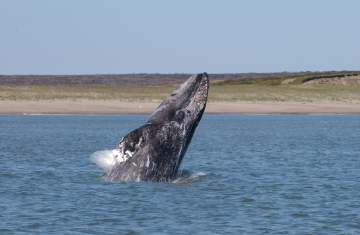710824_On the Decline_360 px width.png

The eastern North Pacific gray whale population has fluctuated over the past several decades. Recently, their numbers have been declining, possibly due to changing food availability in the Arctic. Credit: NOAA Fisheries
For the eastern North Pacific gray whale, it’s been an up-and-down few decades. The population had been decimated by whaling. Conservation efforts allowed the whales to rebound. But over the past few years, the numbers have dropped again.
There are two populations of North Pacific gray whales. One is on the Asian side of the Pacific Ocean. The other is along the coast of the United States and Canada.
Every year, the whales migrate 10,000 miles or more. They go from their summer feeding grounds, in the Arctic, to the coast of Mexico, where calves are born.
Scientists count the number of migrating whales and the number of births every year. And the trend in recent years has been discouraging. The population peaked in 2016, at about 27,000. By 2022, though, it dropped to fewer than 17,000 whales.
Scientists have listed several possible causes for the drop. Some of the gray whales get hit by boats or tangled in fishing lines during their migration. And some dead ones that washed ashore were malnourished—perhaps a result of changes in the food supply in the Arctic.
The whales have gone through a big population drop before but recovered. And the numbers nudged upward a little bit in 2023. So marine biologists say there’s no reason to panic. Restrictions on whaling and other conservation efforts could allow the eastern north Pacific gray whale to recover once again—continuing the up-and-down pattern of recent decades.

